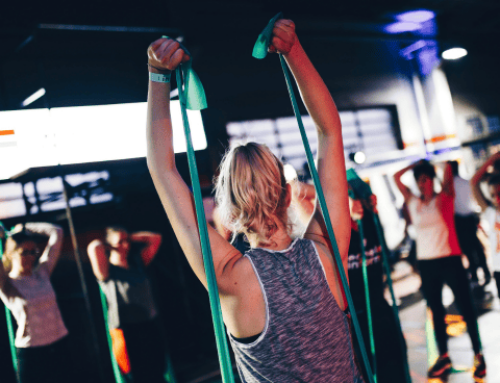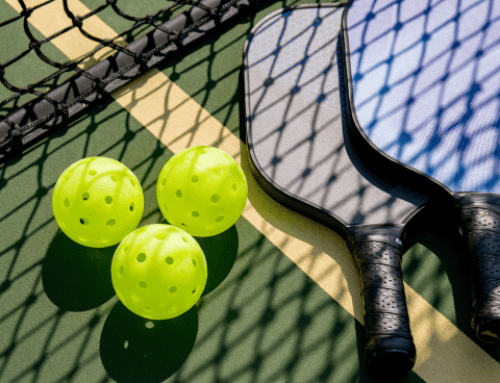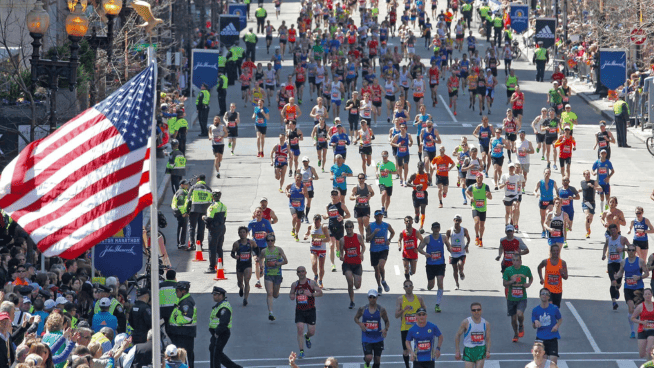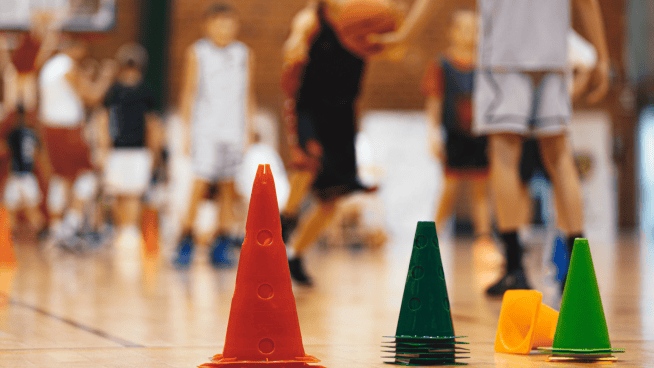3 Reasons Why You Should Use Pause Reps
There is a million and one ways to make your exercises more difficult.
But there is only one method that possesses such brutality and agony that it will absolutely floor you no matter how much weight you use. That method is a technique known as pause reps.
If placed strategically into your training, pause reps can help you see some serious improvements in your strength and enhance your overall performance.
What is a Pause Rep?
Pause reps are exactly what they sound like. On a pause rep, you simply pause at some point during the movement in that repetition. The exact point of the pause can be in either the eccentric or concentric portion of the movement.
There are big three reasons why every athlete can benefit from this technique:
1. Bigger Lifts
Have you ever tried to go for a max on your Squat only to hit a certain sticking point you couldn’t get beyond? You were angry and disappointed, because you knew the strength was there, but every lift has a weak point.
Athletes and fitness enthusiasts alike commonly rely on the momentum of the movement to complete reps when the loads get heavy (let’s say 80% of your max and up). Walk into any gym across the country, and you’ll see plenty of people bouncing the barbell off their chest or the floor like a kid jumping on a trampoline.
The result of “bouncy” technique is the development of weak points. You end up reducing the use of the muscle through its full range of motion, minimizing muscle force production and essentially depriving yourself from potential gains.
Instead, you can pause right at that moment when you used to bounce. This maintains muscle tension and strengthens the muscle through its full range of motion.
The most common exercise where I see athletes bounce is the Bench Press. It’s like the second the barbell gets heavy, athletes want to cheat the movement.
Instead, try to pause for 3 to 5 seconds on the chest. I’d suggest using weights within 70-80% range of your one-rep max, or 7-8 on a rate-of-perceived-exertion scale. Certainly err on the light side when you first try this and slowly work your way up. It looks like what you see in the video above.
2. Improved Form
Pausing mid-rep forces you to pay attention to your body and the muscles you’re utilizing to move the weight. This essentially allows you to study your own form more closely than it would with full-speed reps.
One of my favorite things to prescribe to a client is to pause mid-rep during a warm-up with an extremely light weight, often just the barbell. My reason is that it sets the tone for the entire workout. Instead of thinking about everything else going on in your head, you center your focus and zero in on your body and your workout.
A Squat with three distinct pauses can be an excellent way to ensure your form is on point. I utilize this often in the warm-up for a squat session. Here’s what you do:
- Get under an empty barbell, un-rack it, and position yourself for a Squat.
- Slowly squat down and pause a quarter way down, checking on where your weight is distributed.
- Go down to your regular depth and pause there again, checking your muscle activation and the weight distribution.
- Pause halfway up to again examine those areas.
These pauses give you a chance to see if you’re falling into some common Squat mistakes, such as having your knees collapse inward or coming too far forward onto your toes. The video above shows how it looks in action. Recommended rep and set range is 2 sets of 5 reps included inside your usual warm-up.
3. Greater Strength
If you want to get stronger and grow bigger muscles, you should consider implementing mid-rep pauses. This technique helps you create more tension throughout the whole body, and increases time under tension as well as force production.
While muscle growth occurs through mechanical loading (such as lifting heavy weights), if there is a weak point somewhere in the chain of your movement, you can only go so heavy. As a result, you hit plateaus in your training.
In other words, if your form breaks down under a maximal load, you reduce how much you can potentially lift. If you can’t continue to lift heavier weights, your gains in absolute strength will eventually plateau.
Paused Deadlifts, as seen above, are another way to utilize pause reps. I like to pause on the way up at about mid-shin. I like utilizing this exercise with my athletes to help them be stronger and more powerful on their Deadlifts off the floor. I suggest using around 75-80% of your one-rep max for three sets of five reps. Implement this technique in your training and see your performance both in the gym and the filed improve in no time.
READ MORE:
RECOMMENDED FOR YOU
MOST POPULAR
3 Reasons Why You Should Use Pause Reps
There is a million and one ways to make your exercises more difficult.
But there is only one method that possesses such brutality and agony that it will absolutely floor you no matter how much weight you use. That method is a technique known as pause reps.
If placed strategically into your training, pause reps can help you see some serious improvements in your strength and enhance your overall performance.
What is a Pause Rep?
Pause reps are exactly what they sound like. On a pause rep, you simply pause at some point during the movement in that repetition. The exact point of the pause can be in either the eccentric or concentric portion of the movement.
There are big three reasons why every athlete can benefit from this technique:
1. Bigger Lifts
Have you ever tried to go for a max on your Squat only to hit a certain sticking point you couldn’t get beyond? You were angry and disappointed, because you knew the strength was there, but every lift has a weak point.
Athletes and fitness enthusiasts alike commonly rely on the momentum of the movement to complete reps when the loads get heavy (let’s say 80% of your max and up). Walk into any gym across the country, and you’ll see plenty of people bouncing the barbell off their chest or the floor like a kid jumping on a trampoline.
The result of “bouncy” technique is the development of weak points. You end up reducing the use of the muscle through its full range of motion, minimizing muscle force production and essentially depriving yourself from potential gains.
Instead, you can pause right at that moment when you used to bounce. This maintains muscle tension and strengthens the muscle through its full range of motion.
The most common exercise where I see athletes bounce is the Bench Press. It’s like the second the barbell gets heavy, athletes want to cheat the movement.
Instead, try to pause for 3 to 5 seconds on the chest. I’d suggest using weights within 70-80% range of your one-rep max, or 7-8 on a rate-of-perceived-exertion scale. Certainly err on the light side when you first try this and slowly work your way up. It looks like what you see in the video above.
2. Improved Form
Pausing mid-rep forces you to pay attention to your body and the muscles you’re utilizing to move the weight. This essentially allows you to study your own form more closely than it would with full-speed reps.
One of my favorite things to prescribe to a client is to pause mid-rep during a warm-up with an extremely light weight, often just the barbell. My reason is that it sets the tone for the entire workout. Instead of thinking about everything else going on in your head, you center your focus and zero in on your body and your workout.
A Squat with three distinct pauses can be an excellent way to ensure your form is on point. I utilize this often in the warm-up for a squat session. Here’s what you do:
- Get under an empty barbell, un-rack it, and position yourself for a Squat.
- Slowly squat down and pause a quarter way down, checking on where your weight is distributed.
- Go down to your regular depth and pause there again, checking your muscle activation and the weight distribution.
- Pause halfway up to again examine those areas.
These pauses give you a chance to see if you’re falling into some common Squat mistakes, such as having your knees collapse inward or coming too far forward onto your toes. The video above shows how it looks in action. Recommended rep and set range is 2 sets of 5 reps included inside your usual warm-up.
3. Greater Strength
If you want to get stronger and grow bigger muscles, you should consider implementing mid-rep pauses. This technique helps you create more tension throughout the whole body, and increases time under tension as well as force production.
While muscle growth occurs through mechanical loading (such as lifting heavy weights), if there is a weak point somewhere in the chain of your movement, you can only go so heavy. As a result, you hit plateaus in your training.
In other words, if your form breaks down under a maximal load, you reduce how much you can potentially lift. If you can’t continue to lift heavier weights, your gains in absolute strength will eventually plateau.
Paused Deadlifts, as seen above, are another way to utilize pause reps. I like to pause on the way up at about mid-shin. I like utilizing this exercise with my athletes to help them be stronger and more powerful on their Deadlifts off the floor. I suggest using around 75-80% of your one-rep max for three sets of five reps. Implement this technique in your training and see your performance both in the gym and the filed improve in no time.
READ MORE:











